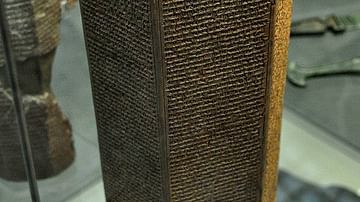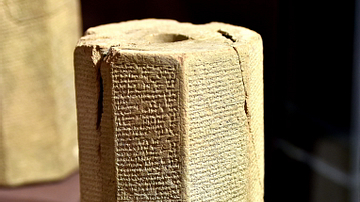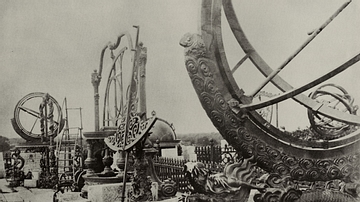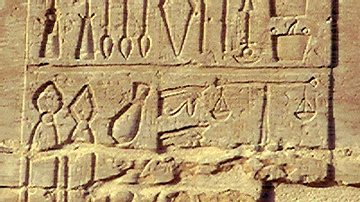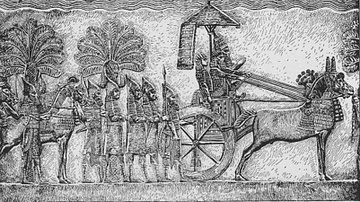Illustration
Alabaster bas relief depicting marching shield bearers accompanied by a group of musicians who carry different musical instruments, from Nineveh, northern Mesopotamia, Iraq, Neo-Assyrian Empire, reign of king Sennacherib, 705-681 BCE.
The Pergamon Museum, Berlin.
The male musicians are carrying rectangular drums with a string; this instrument can still be found in modern Iraq and northern Africa and is seen here for the very first time. The same applies to the cymbals, which are made of two sound boxes and handles; the second woman on the right holds a cymbal. At the end of the procession walks a richly decorated woman who holds a round drum.
The arrangement and cut of these wall reliefs suggest that the whole representation and scene was placed on the side walls of a descending ramp that leads from the Royal Palace to the Ishtar Temple. Therefore, the Assyrian king was able to go directly from his palace to the temple during cult ceremonies.
About the Author
Cite This Work
APA Style
Amin, O. S. M. (2014, August 31). Assyrian Wall Relief Depicting Musical Instruments. World History Encyclopedia. Retrieved from https://www.worldhistory.org/image/2996/assyrian-wall-relief-depicting-musical-instruments/
Chicago Style
Amin, Osama Shukir Muhammed. "Assyrian Wall Relief Depicting Musical Instruments." World History Encyclopedia. Last modified August 31, 2014. https://www.worldhistory.org/image/2996/assyrian-wall-relief-depicting-musical-instruments/.
MLA Style
Amin, Osama Shukir Muhammed. "Assyrian Wall Relief Depicting Musical Instruments." World History Encyclopedia. World History Encyclopedia, 31 Aug 2014, https://www.worldhistory.org/image/2996/assyrian-wall-relief-depicting-musical-instruments/. Web. 20 Apr 2025.



